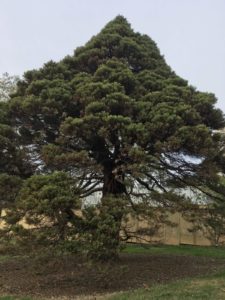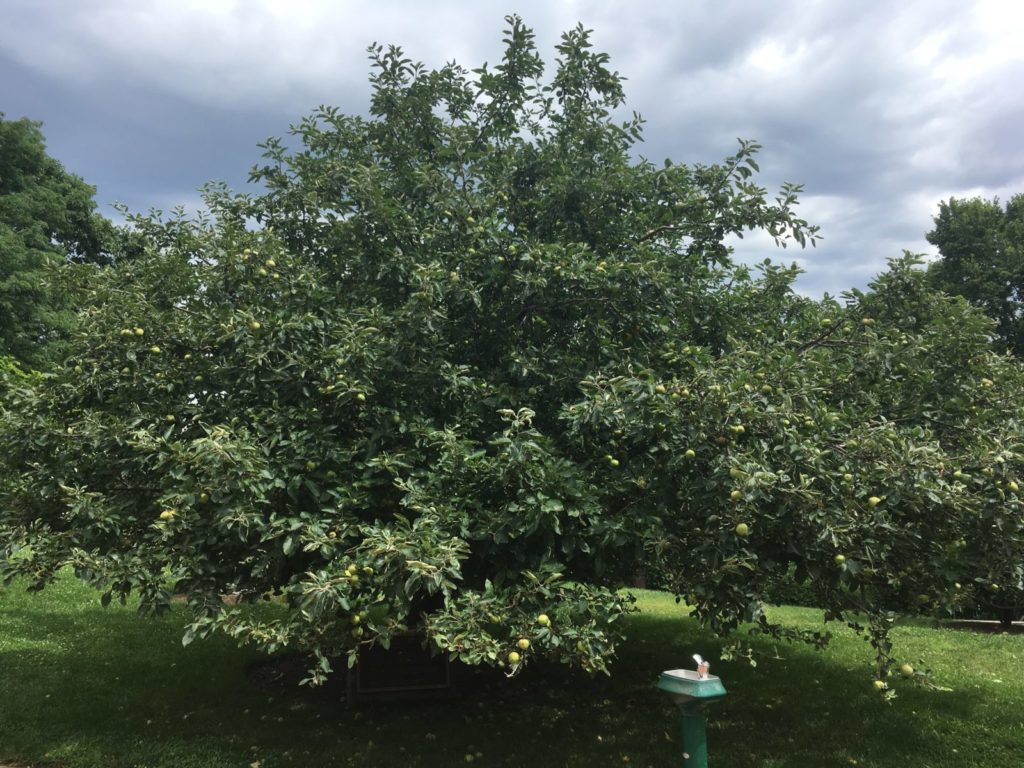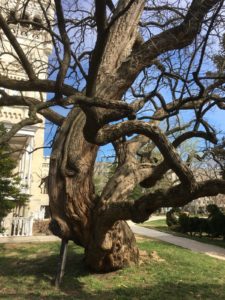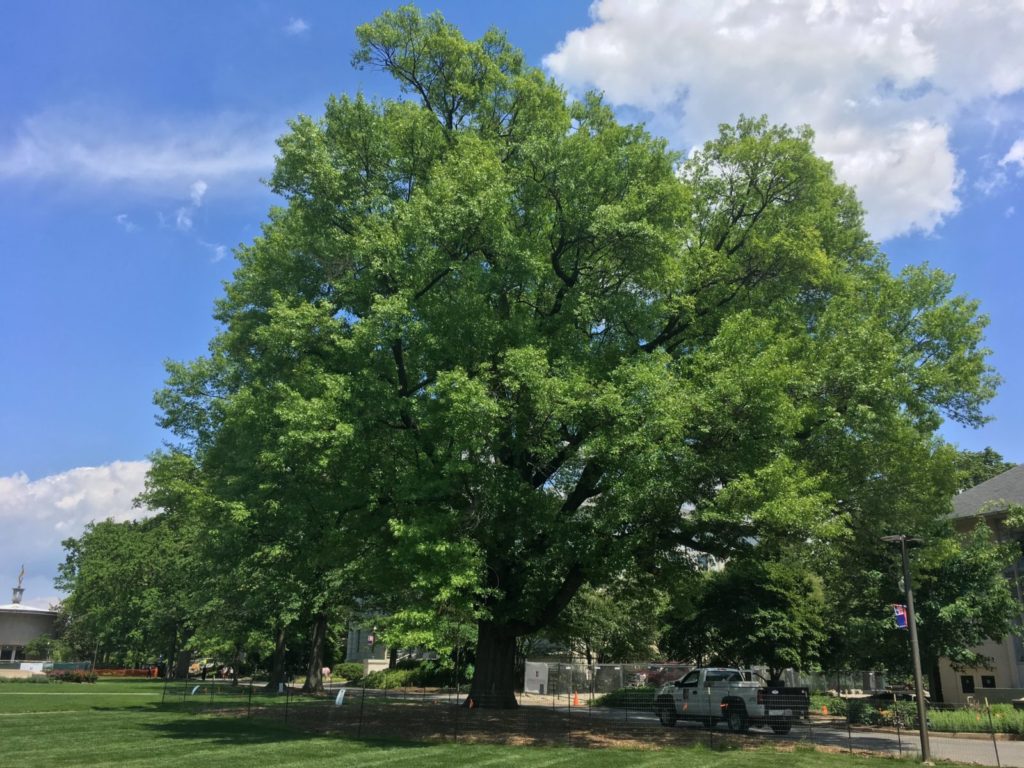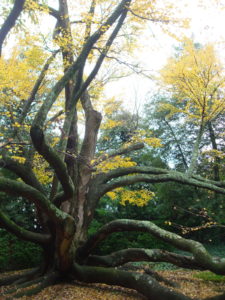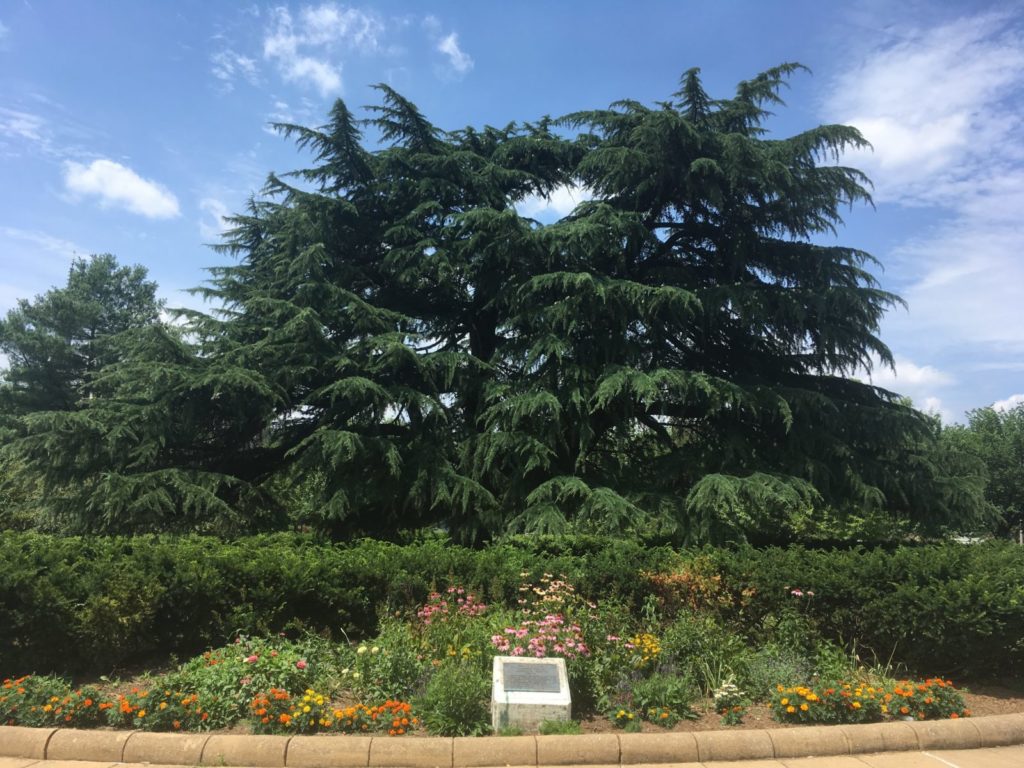THE LEAFLET
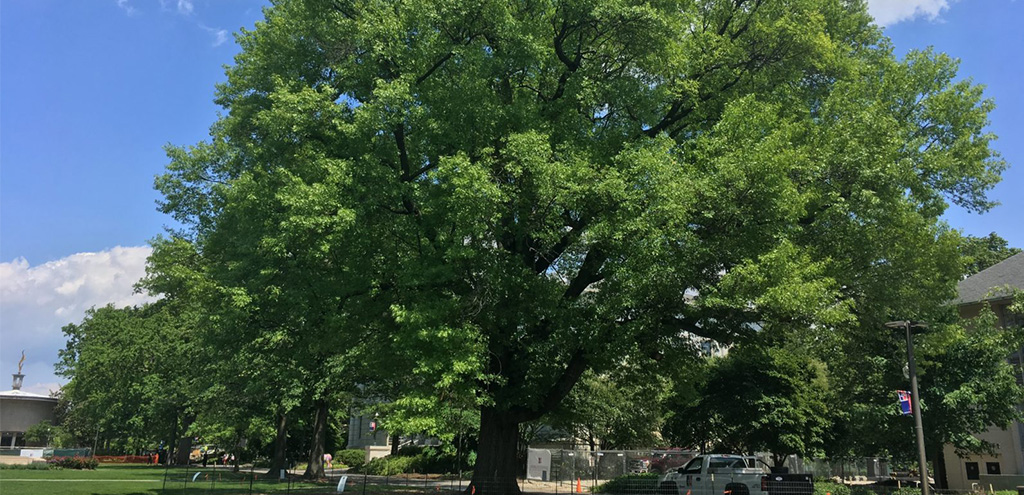
Famous and Unusual D.C. Trees Highlighted in the DCist
Our tree interaction is usually limited to smaller saplings we plant as a part of our Community Tree Plantings or for free for homeowners around D.C. or larger trees in District parks we’re inventorying. Therefore, this DCist piece about the most unusual trees you can find in D.C. was quite a fun read. Better yet? It’s written by Student Conservation Association and Casey Trees Summer Crew Alum Sam Nelson! (Check out his recap of the summer he spent with us). Check them all out —
Gorgeous common hardwoods like American Beech and elm fill the canopy of Washington, D.C., but it has many surprising trees, too. Some tell stories from history. Others traveled from unexpected places. And some simply dazzle across seasons.
“Washington, D.C.’s trees are botanically diverse,” Melanie Choukas-Bradley, author of City of Trees, A Year in Rock Creek Park, and The Joy of Forest Bathing, tells DCist via email. City of Trees is a comprehensive field guide to our city’s urban canopy and claims there are more than 300 species overall in our city from many different climates and countries. “Northern and southern species overlap in the Washington region and so do trees native to the piedmont and coastal plain.”
Chris Carley, supervisory horticulturalist at the U.S. National Arboretum, credits our temperate climate for our diversity of trees. “It’s cool enough in the winter that we can grow northern trees, and warm enough in summer that we can southern trees,” says Carley. We also share a similar climate to temperate zones in Asia, making ornamental trees like zelkova and cherry trees possible.
It’s a difficult and subjective exercise to narrow our canopy into a list of the 10 most interesting trees, but part of the fun is recognizing that each specific tree and species has some quality that marks it as special if you stop to pay attention. Here are 10 of them, beloved by local experts who work to highlight, share, and preserve them.
Dawn Redwood, Metasequoia glyptostroboides
Why it’s special: This tree was supposed to be as dead as dinosaurs. There was a fossil record of its existence, but nobody outside of rural China knew dawn redwoods still lived until a series of expeditions discovered them in the Sichuan province in the late 1940s, according to Jill Jonnes in her book Urban Forests: A Natural History of Trees and People in the American Cityscape. Beyond its remarkable story of discovery, it’s a real looker. It looks similar to the bald cypress but can be distinguished by its opposite-needle leaf arrangement. It’s especially beautiful in fall because it is a deciduous conifer, a rare needle-leafed tree that isn’t evergreen and drops its leaves. Before it does, the needles turn a gorgeous rusty-gold. “When we first planted them on campus, everyone thought they were dead and dying,” says Mike Mastrota, the arboretum manager at American University, where the quick-growing trees have now outgrown the university library in height.
Where to see it: It is a popular street tree all over D.C., but to touch on its history, visit the National Arboretum. There is a grove of dawn redwoods (across from a photo-favorite cherry tree) that Carley says were germinated from among the first seeds collected in China.
Giant Sequoia, Sequoiadendron giganteum
Why it’s special: It’s unexpected to see examples of California’s colossal state tree in D.C. While this redwood won’t grow to the size or age that they do in California, they are gorgeous conifers with soft, shapely bark. “They are way out of their natural element,” says Melissa Westbrook, Urban Forester at the Architect of the Capitol. Carley adds that D.C. summers are too wet for them, especially lately, and this increases the risk of disease.
Where to see it: While there are four Sequoias at the National Arboretum, the oldest examples are maturing on the lawns of the U.S Capitol building. Westbrook says the memorial Sequoia on the South Lawn is about 100 years old and looking healthy, likely due to good hillside drainage. On the recently reopened North Lawn is the Chief Sequoyah tree, planted in 1966 to honor the Cherokee Nation chief for whom the tree was likely named. The U.S. Capitol Grounds is an accredited Class II arboretum.
Yamaki White Pine bonsai, Pinus parviflora
Why it’s special: So many reasons. The Yamaki pine has been cared for since 1628, meaning it will soon be 400 years old. The tree survived the Hiroshima bomb strike in 1945 in bonsai master Masaru Yamaki’s compound less than two miles away from the blast site. It was part of a large gift of bonsai trees (trees that have been trained and pruned to grow at a small size) from Japan to United States in 1976 to celebrate our nation’s bicentennial, and so some call it the peace tree. It’s also likely a hybrid of pine trees, a white pine grafted onto a red or black pine tree, which have stronger root systems than white pines.
Where to see it: Known as the Yamaki pine because of the family that trained it, you can find this tree at the National Bonsai and Penjing Museum in the National Arboretum.
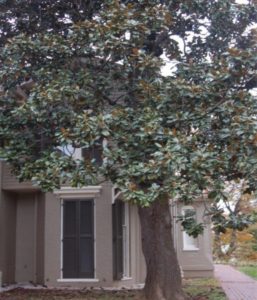
This southern magnolia sits outside the study window at Frederick Douglass’ home. Photo courtesy Frederick Douglass National Historic Site
Frederick Douglass’s Southern Magnolias, Magnolia grandiflora
Why it’s special: Southern magnolias are common in D.C., but the two trees outside Frederick Douglass’ study window on Cedar Hill are exceptional. The trees were planted by Douglass himself as a symbolic gift to his first wife, Anna Murray-Douglass, between 1877 and 1882, according to Ka’mal McClarin, the museum curator at the Frederick Douglass House. Both these trees are in the Witness Tree Protection Program, which is a partnership project between Historic Americans Landscape Survey and National Park Service to identify significant trees of legacy in the region and give them extra care and love. Legacy trees offer a tangible, living connection to events and people in history, an arboreal thread tying us together through time.
Where to see it: See it among the lovely trees on the grounds at The Frederick Douglass National Historic Site.
Newton Tree, Malus domestica
Why it’s special: You know the story (I hope). Newton was supposedly sitting in the shade of an apple tree when the theory of gravity struck him on the head. Newton has been a physics hero ever since, but the apple tree deserves some props, too. That same tree still lives on Woolsthorpe Manor in England. According to Atlas Obscura, Irvine Gardner of the National Bureau of Statistics acquired an original cutting and planted it in 1957 on the NBS campus in Van Ness. NBS moved campuses in 1968, but the tree remained. A clone was replanted from another cutting in 2000 in what is now International Park. The third-generation descendant has grown quickly amidst several embassies and is monitored lightly by the Secret Service.
Where to find it: The apple tree’s shade remains open to the public, and its tart green apples keep swelling and dropping, ready to head-bop anybody in need of gravitational inspiration. Walk up International Drive from Van Ness Street NW, and there’s an elevated park nestled between the circle of embassies.
Osage-orange Tree, Maclura pomifera
Why it’s special: The Osage-orange tree stands out in a crowd. Its gnarly bark criss-crosses itself in rough art, and its fruit looks like green pimply baseballs. They aren’t common but they aren’t rare either, maturing in parks and yards across D.C. Choukas-Bradley says the wood was prized by the Osage Nation who used it to make bows while “the large green fruits produced by the female trees were once eaten by mammoths and mastodons, who helped spread the seeds.” Despite its name, the Osage-orange tree is a member of the mulberry family.
Where to find it: The best example is outside Lincoln’s summer cottage in the Armed Forces Retirement Home. “The Osage-orange growing near the Lincoln Cottage is a mature, leaning tree of dramatic stature,” says Choukas-Bradley.
Scarlet Oak, Quercus coccinea
Why it’s special: Did you know D.C. has an official tree symbol? Meet the scarlet oak. Easily confused with the pin oak, the scarlet oak has deeper sinuses in the leaf’s lobes, which turn scarlet in fall. “Its scarlet autumn foliage has earned the scarlet oak the distinction of being of one of the city’s most popular cultivated trees, as well as one of the most beautiful oaks in the world,” writes Choukas-Bradley in City of Trees.
Where to see it: There’s a scarlet oak in the main quad of American University that Mastrota says is the largest and oldest tree on campus. It’s as old if not older than the university itself. (American University’s campus—open to the public—is accredited as a Class II arboretum, full of international trees in addition to native species like the scarlet oak.)
Katsura tree, Cercidiphyllum japonicum
Why it’s special: The Katsura tree is a Japanese native with redbud-like leaves and similarly deep-pink blossoms in spring. But the real show comes in the fall, when its leaves turn a brilliant sun-gold reminiscent of quaking aspens.
Where to see it: Dumbarton Oaks has two Katsuras, says Jonathan Kavalier, the property’s director of grounds and gardens. They are unique because of their shape, but one in particular has several trunks and branches and looks like a woody octopus emerging from the edge of the south lawn. “You don’t really find a lot of multi-trunk Katsuras in the industry like this,” says Kavalier. He believes it is over 100 years old and predates the Bliss family’s purchase of the property in 1920. Landscape architect Beatrix Farrand later planted a second katsura tree across the lawn to mirror the first.
Himalayan Cedar, Cedrus deodara
Why it’s special: The deodar cedar is a true cedar that can be found in the Himalayas as high as 12,000 feet, but has found a comfortable home here in D.C. Choukas-Bradley calls it “one of the largest and most dramatic conifers planted in Washington.” The cones are stunning, almost alien-like compared to local conifers. Female cones are off-white and upright to allow fertilization from the reddish male cones growing on the same tree, according to Kavalier. Often their branches spread up and out with odd turns and twists. “They have a really individual kind of character and form,” Kavalier says.
Where to see it: This tree is surprisingly prevalent in residential yards. A mature deodar cedar is the showy centerpiece of Grant Circle in Petworth, in pretty companionship with several ginkgos and a Colorado blue spruce across the sidewalk. There is also a grove at Dumbarton Oaks visible from S Street next to Jelleff Recreation Center.
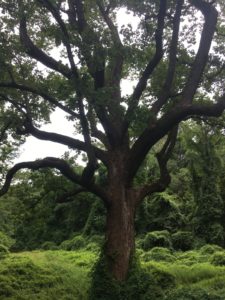 Montrose Park Tulip Poplar, Liriodendron tulipifera
Montrose Park Tulip Poplar, Liriodendron tulipifera
Why it’s special: The tulip poplar is one of the most common tree species in D.C., but the one in Georgetown’s Montrose Park is a giant beauty. It is considered a champion tree, which means it is the biggest of its species in an area. Megan Nortrup, the region’s information sharing specialist at National Park Service, says the tree likely dates back to the early 19th century, based on its size. It is about 100 feet tall with more than 100 feet in crown spread. It is also in the Witness Tree Protection Program. Nortrup says the tree was chosen for its “longevity and picturesque setting.”
Where to see it: The champion tulip poplar is near the back of Montrose Park, visible from Lovers Lane as it descends toward Dumbarton Oaks Park (a public park behind Dumbarton Oaks Garden).

